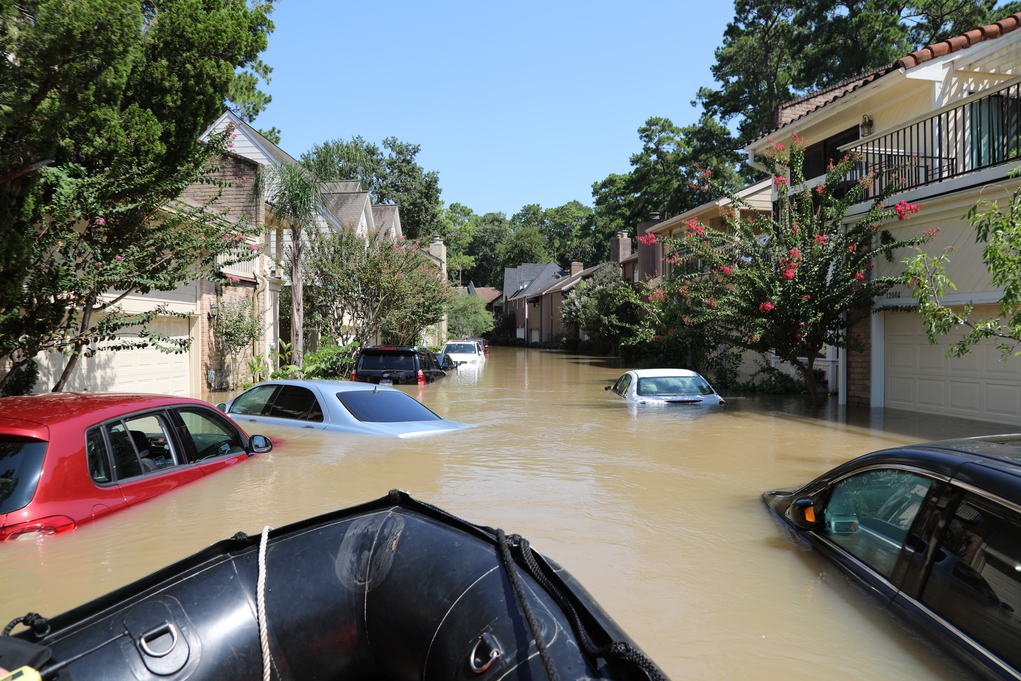In a case of competing deductibles, a federal appeals court has sided with an insurer and against the owner of two Houston office buildings, holding that a larger windstorm deductible applied to flood damage caused by Hurricane Harvey rather than a lower flood deductible.
The insurer, Lexington Insurance Co., won by arguing that even though the building suffered only flood damage, the windstorm deductible applied because a hurricane is a windstorm.
The windstorm deductible had additional provisions attached that resulted in the insured being owed no payment towards its flood loss.
The case began in 2017 when two Houston buildings were damaged solely by flooding from Hurricane Harvey. The policy had two possible deductibles—a lower one involving flood damage only and a higher one for windstorms including named storms.
In filing its claim, the insured owner of the buildings, Pan Am Equities, favored the generic flood deductible. The flood deductible said that $100,000 “shall be deducted from any adjusted loss due to flood,” which was defined to include surface water; rising waters; waves; tide or tidal water.
Pan Am argued that the policy provided discrete deductibles for discrete types of losses and, if a flood loss is unaccompanied by a windstorm loss as was its case, only the flood deductible should apply.
Pan Am claimed that there was no wind damage to justify using windstorm deductible. The windstorm deductible and its named storm provision were found under the “Windstorm” heading in the policy and thus must apply only to those losses caused at least in part by windstorm—not to flood-only losses, Pan Am argued.
Lexington, however, chose to apply the higher windstorm deductible. It argued that it was the correct deductible because a hurricane is a windstorm and it included a provision making clear it was to be used for losses caused by named storms (which Harvey was).
While both deductibles were $100,000, the windstorm deductible also required that the claimed loss had to be more than 5% of “total insurable values” (TIV) for it to be triggered. Pan Am’s claim did not meet this threshold.
The opinion (Pan Am Equities Inc. v Lexington Insurance Co.) written by Fifth Circuit Court of Appeals Judge Don R. Willett affirmed a district court ruling that the windstorm language was controlling.
Applying Texas law, the court rejected Pan Am’s position citing, among other reasons, its failure to give effect to the entire policy, including the policy’s anti-stacking provision, which said that if multiple deductibles applied, then the larger one prevails.
The appeals court said the answer to the dispute turned on the interplay of five provisions: 1. flood deductible; 2. windstorm deductible; 3. named storm provision; 4. flood definition; and 5. anti-stacking clause.
“This Policy, like many insurance policies, may not rank as first-rate legal craftsmanship. But it is clear enough. Inartful is not the same as equivocal. When read as an interrelated, contextual whole, this Policy is unambiguous,” Willett wrote.
In siding with Lexington, the court explained: “The ‘Windstor’ deductible applies to all ‘loss due to Windstorm.’ And the accompanying ‘Named Storm’ provision enlarges what qualifies as a ‘loss due to Windstorm’ to plainly encompass Harvey’s flood damage to Pan Am’s buildings.”
The court said Pan Am placed “undue interpretive weight” on the fact that the policy’s named storm provision is found within the windstorm deductible. It said that the location of a provision matters lees than what the provision says.
The court rejected what it called Pan Am’s “myopic view” that the policy’s generic definition of flood precludes the more specific named storm provision from listing the perils covered by the windstorm deductible.
Was this article valuable?
Here are more articles you may enjoy.


 BNSF Says It Didn’t Know About Asbestos That’s Killed Hundreds in Montana Town
BNSF Says It Didn’t Know About Asbestos That’s Killed Hundreds in Montana Town  California Chiropractor Sentenced to 54 Years for $150M Workers’ Comp Scheme
California Chiropractor Sentenced to 54 Years for $150M Workers’ Comp Scheme  J&J, Kenvue Told to Pay $45 Million to Baby Powder User’s Family
J&J, Kenvue Told to Pay $45 Million to Baby Powder User’s Family  Poll: Consumers OK with AI in P/C Insurance, but Not So Much for Claims and Underwriting
Poll: Consumers OK with AI in P/C Insurance, but Not So Much for Claims and Underwriting 